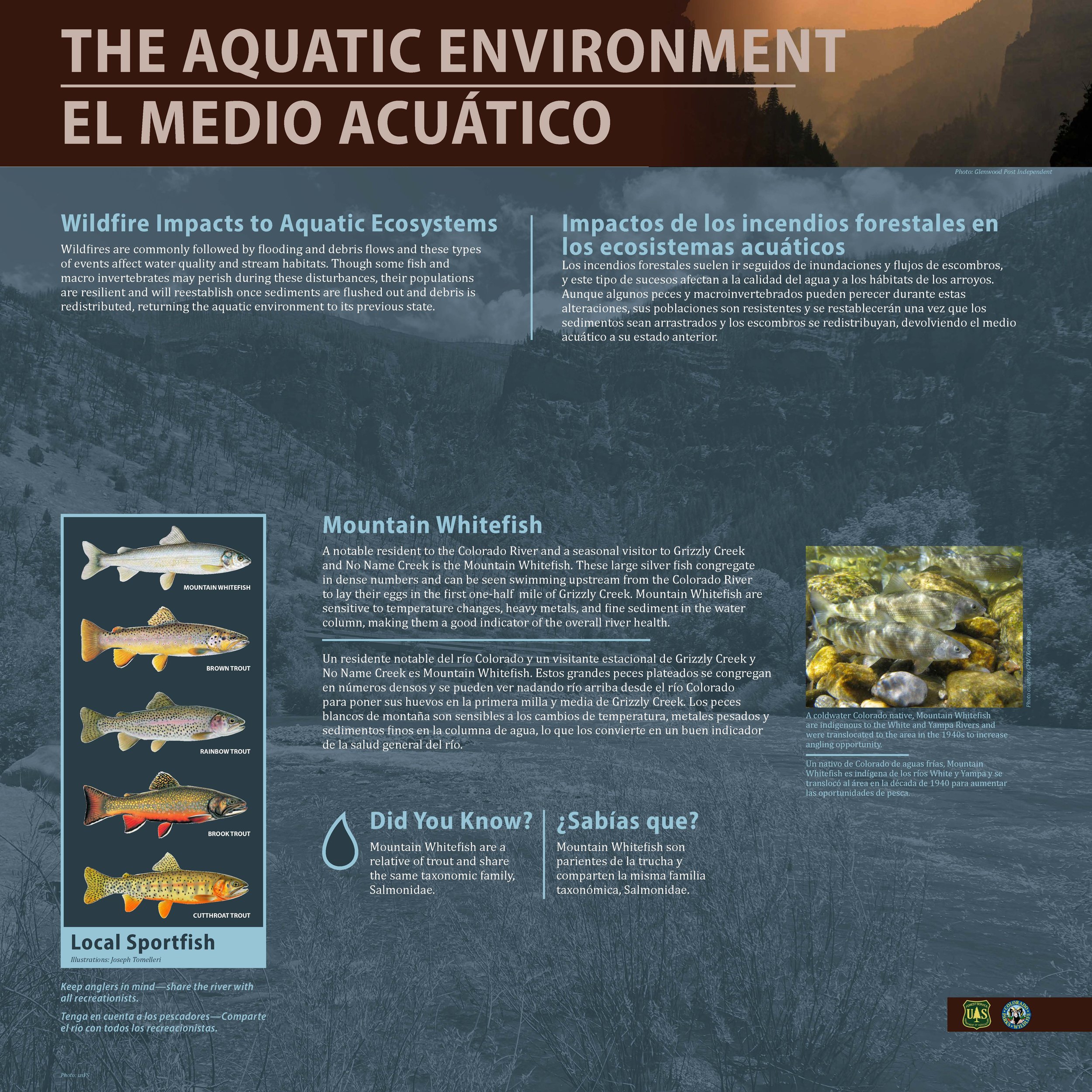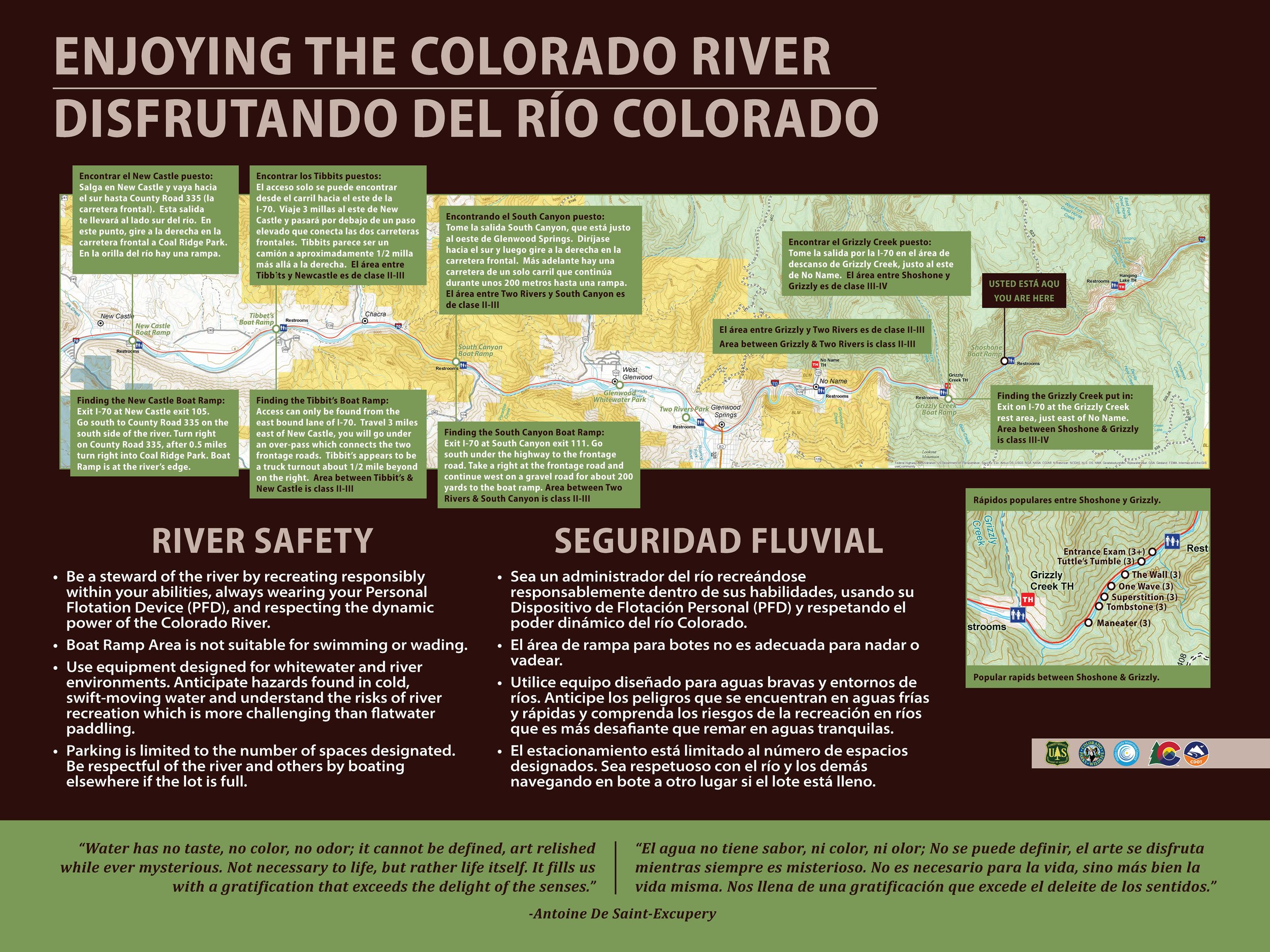MCWC works with USFS to complete design phase for replacing signage in Glenwood Canyon after the 2020 Grizzly Creek Fire
The 2020 Grizzly Creek Fire in Glenwood Canyon’s steep and rocky drainages had immediate impacts on the city of Glenwood Springs’ water supply, travel on an interstate highway, people’s homes, the local economy, canyon ecology and downstream users. Spring runoff and the summer monsoon seasons caused changes in the water quality, and debris flows off the burn scar caused additional canyon shutdowns. Because the canyon is a favorite of locals and visitors, public outreach and information have stressed the importance of being aware in this post-fire environment and taking care of the watershed during their visits.
To increase public awareness of the impact of the fire and its impact, the Middle Colorado Watershed Council have worked with the US Forest Service, Colorado Department of Transportation (CDOT), and Colorado Parks and Wildlife (CPW) since 2022 to develop a plan for updating and replacing permanent signage in Glenwood Canyon.
Permanent signage replacement has required input from a variety of major stakeholders from the Glenwood Canyon Restoration Alliance to provide their expertise in regard to canyon access to its trails and bike path, river and creek access, interstate travelers and tourists, and local, state and federal agencies concerns regarding environmental health and habitat. The canyon is a major tourist attraction and recreation area. Two of its drainages provide the major source of water for the nearby town, and the river is the main source of public water intake for every downstream town in the watershed corridor as well as numerous agriculture intake ditches. The interstate and the railway that run through the canyon is a primary source of cross-country travel, and forest and riparian health are a concern of the USFS and CPW.
The planning phase of the project involved forming a planning committee, a canyon tour to compile current sign inventory, educational activities for USFS summer crews to draft research and writing, selection of potential site locations, creating a final sign list, and working with a planner/design team from SE Group to collaborate on what the final replacement inventory and design will be for all signs.
The design phase of the project included final selection of locations and types of signs for the Jesse Weaver trailhead in No Name canyon, the Grizzly Creek trailhead, the Grizzly Creek Boat Ramp, the Shoshone boat ramp, and two locations on the pedestrian trail in the canyon. The signs include messaging and stories from the USFS, CDOT and CPW. Story telling not only includes the post fire story and canyon history and ecology, but also addresses stewardship, regulations, safety, and land and water use etiquette. There are some minor updates for the sign design, but fabrication and installation in coordination with CDOT, USFS personnel and volunteers are being planned for the summer and fall of 2024.
The Glenwood Canyon Sign Project has benefitted from a variety of local, state and federal partners' multi-year engagement to determine the inventory, assessment and priority of which signs needed replacement in the canyon due to impacts from the 2020 Grizzly Creek Fire and post-fire events and weathering. Canyon restoration and the health of this watershed will take many years, and this signage will engage and entrust all its users to be a part of that restoration.
To see the updated sign plan with the new designs, this link will take you to the Glenwood Canyon Sign Plan.




